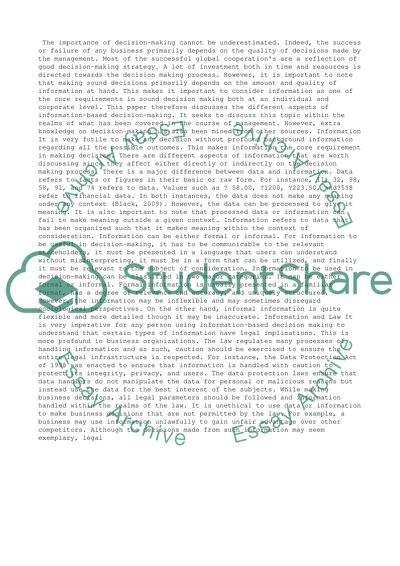Cite this document
(“Imformation based decision making Essay Example | Topics and Well Written Essays - 2750 words”, n.d.)
Retrieved from https://studentshare.org/management/1394472-unit
Retrieved from https://studentshare.org/management/1394472-unit
(Imformation Based Decision Making Essay Example | Topics and Well Written Essays - 2750 Words)
https://studentshare.org/management/1394472-unit.
https://studentshare.org/management/1394472-unit.
“Imformation Based Decision Making Essay Example | Topics and Well Written Essays - 2750 Words”, n.d. https://studentshare.org/management/1394472-unit.


